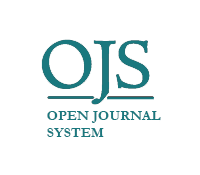Peran Moderasi Strategi Bisnis Di Antara Thin Capitalization Rule Dan Penghindaran Pajak
DOI:
https://doi.org/10.22219/jrak.v14i1.33041Keywords:
Business Strategy, Tax Avoidance, Thin Capitalization RuleAbstract
Purpose: This study aims to analyze the effect of thin capitalization rule on tax avoidance moderated by business strategy.
Methodology/approach: The research method used is a quantitative approach with secondary data. Samples were taken using purposive sampling and confirmatory factor analysis result ranking to obtain 30 multinational companies registered on the IDX during the 2014-2019 period excluded multinational companies which are not PMK-169 subject. So, the total observations data is 180. The research analysis techniques using hierarchical regression analysis.
Findings: The results showed that business strategy can moderate between thin capitalization rule and tax avoidance. The defender business strategy weakens the negative influence of the Thin Capitalization Rule on tax avoidance, whereas the prospector business strategy strengthens the negative influence of the Thin Capitalization Rule on tax avoidance.
Practical implications: The government could consider easing the Thin Capitalization Rule for companies operating in business sectors dominated by prospectors and tightening the rules for companies operating in business sectors dominated by defenders.
Originality/value: There are still no research references regarding thin capitalization rule on tax avoidance moderated by business strategy. This research develops previous research by adding business strategy with confirmatory factor analysis in the moderation model.
Downloads
References
Allingham, M. G., & Sandmo, A. (1972). Income tax evasion: a theoretical analysis. Journal of Public Economics, 1(3-4), 323-338. https://doi.org/10.1016/0047-2727(72)90010-2
Anindita, R. I., Irawan, F., Firmansyah, A., Wijaya, S., Qadri, R. A., Sumantri, J., Andriani, A. F., & Mahrus, M. L. (2022). THE IMPACT OF THIN CAPITALIZATION RULES ON CAPITAL STRUCTURE AND TAX AVOIDANCE. Journal of Governance and Regulation, 11(2), 8-14. https://doi.org/10.22495/jgrv11i2art1
Anwar, K. (2014). Analisis Dampak Defisit Anggaran terhadap Ekonomi Makro di Indonesia. Jejaring Administrasi Publik, 2, 588-603.
Armstrong, C. S., Blouin, J. L., Jagolinzer, A. D., & Larcker, D. F. (2015). Corporate governance, incentives, and tax avoidance. Journal of Accounting and Economics, 60(1), 1-17. https://doi.org/10.1016/j.jacceco.2015.02.003
Atmaja, A. B. (2021). Analisis Efektivitas Peraturan Penentuan Perbandingan Utang Dan Modal Pmk-169/Pmk.010/2015 Dan Per-25/Pj/2017 Terhadap Tingkat Penghindaran Pajak Di Indonesia. ABIS: Accounting and Business Information Systems Journal, 9(4). https://doi.org/10.22146/abis.v9i4.70438
Babberich, N. P. M. (2009). The Thin Capitalization Rules and Multinationals Financing and Investment Decision: Evidence from Dutch Legislation Erasmus University]. Rotterdam.
Bentley, K. A. (2013). Antecedents to financial statement misreporting: The influence of organizational business strategy, ethical culture and climate. University of New South Wales.
Blouin, J., Huizinga, H., Laeven, L., & Nicodème, G. (2014). Thin Capitalization Rules and Multinational Firm Capital Structure.
Buettner, T., Overesch, M., Schreiber, U., & Wamser, G. (2012). The impact of thin-capitalization rules on the capital structure of multinational fi rms ☆. Journal of Public Economics, 96(11-12), 930-938. https://doi.org/10.1016/j.jpubeco.2012.06.008
Buettner, T., Overesch, M., & Wamser, G. (2018). Anti profit-shifting rules and foreign direct investment. International Tax and Public Finance, 25(3), 553-580. https://doi.org/10.1007/s10797-017-9457-0
Clemente-Almendros, J. A., & Sogorb-Mira, F. (2016). The effect of taxes on the debt policy of spanish listed companies. SERIEs, 7(3), 359-391. https://doi.org/10.1007/s13209-016-0147-4
Darussalam, & Kristiaji, B. B. (2015). Telaah Konstruktif Debt to Equity Ratio di Indonesia. 1-10.
Darussalam, & Septriadi, D. (2017). Perjanjian Penghindaran Pajak Berganda: Panduan, Interpretasi, dan Aplikasi. PT Dimensi Internasional Tax.
de Mooij, R., & Liu, L. (2021). At a cost: The real effects of thin capitalization rules. Economics Letters, 200, 109745-109745. https://doi.org/10.1016/j.econlet.2021.109745
Deegan, C. (2014). Financial Accounting Theory. Fourth Edition. Mc-Graw Hill Education.
Deegan, C., & Rankin, M. (1997). The materiality of environmental information to users of annual reports. Accounting, Auditing & Accountability Journal, 10(4), 562-583. https://doi.org/10.1108/09513579710367485
Desai, M. A., & Dharmapala, D. (2008). Tax and Corporate Governance: An Economic Approach. In Tax and Corporate Governance (pp. 13-30). Springer Berlin Heidelberg. https://doi.org/10.1007/978-3-540-77276-7_3
Donaldson, T., & Preston, L. E. (1995). The Stakeholder Theory of the Corporation: Concepts, Evidence, and Implications. Academy of Management Review, 20(1), 65-91. https://doi.org/10.5465/amr.1995.9503271992
Egger, P., Eggert, W., Keuschnigg, C., & Winner, H. (2010). Corporate taxation, debt financing and foreign-plant ownership. European Economic Review, 54(1), 96-107. https://doi.org/10.1016/j.euroecorev.2009.06.007
Eisenhardt, K. M. (1989). Agency Theory: An Assessment and Review. Academy of Management Review, 14(1), 57-74. https://doi.org/10.5465/amr.1989.4279003
Feulefack Kemmanang, L. (2021). Does resource dependence cushion the impact of thin capitalization rules on foreign investment inflows? Evidence from Africa. Resources Policy, 72, 102055-102055. https://doi.org/10.1016/j.resourpol.2021.102055
Field, A. P. (2018). Discovering Statistics Using IBM SPSS Statistics (5th ed.). Sage.
Freeman, R. E. (1984). Strategic Management: A Stakeholder Approach. MA Pitman.
Graham, J. R., Hanlon, M., Shevlin, T., & Shroff, N. (2014). Incentives for Tax Planning and Avoidance: Evidence from the Field. The Accounting Review, 89(3), 991-1023. https://doi.org/10.2308/accr-50678
Gujarati, D. N., & Porter, D. C. (2009). asic Econometrics (5th ed.). McGraw Hill Inc.
Hair, J. F., Babin, B. J., Black, W. C., & Anderson, R. E. (2019). Multivariate Data Analysis Eighth Edition. United Kingdom: Cengage.
Hanlon, M., & Heitzman, S. (2010). A review of tax research. Journal of Accounting and Economics, 50(2-3), 127-178. https://doi.org/10.1016/j.jacceco.2010.09.002
Hanlon, M., Maydew, E. L., & Saavedra, D. (2017). The taxman cometh: Does tax uncertainty affect corporate cash holdings? Review of Accounting Studies, 22(3), 1198-1228. https://doi.org/10.1007/s11142-017-9398-y
Higgins, D., Omer, T. C., & Phillips, J. D. (2015). The Influence of a Firm's Business Strategy on its Tax Aggressiveness. Contemporary Accounting Research, 32(2), 674-702. https://doi.org/10.1111/1911-3846.12087
Hsu, P. H., Moore, J. A., & Neubaum, D. O. (2018). Tax avoidance, financial experts on the audit committee, and business strategy. Journal of Business Finance & Accounting, 45(9-10), 1293-1321. https://doi.org/10.1111/jbfa.12352
Hutchens, M., & Rego, S. O. (2012). Tax Risk and the Cost of Equity Capital. SSRN Electronic Journal. https://doi.org/10.2139/ssrn.2186564
Jatmiko, V. B., & Husodo, Z. A. (2019). The Impact of Thin Capitalization Rule on Capital Structure.
Jensen, M. C., & Meckling, W. H. (1976). Theory of the firm: Managerial behavior, agency costs and ownership structure. Journal of Financial Economics, 3(4), 305-360. https://doi.org/10.1016/0304-405X(76)90026-X
Kirchler, E., Hoelzl, E., & Wahl, I. (2008). Enforced versus voluntary tax compliance: The “slippery slope” framework. Journal of Economic Psychology, 29(2), 210-225. https://doi.org/10.1016/j.joep.2007.05.004
Klein, A., & Marquardt, C. A. (2006). Fundamentals of Accounting Losses. The Accounting Review, 81(1), 179-206. https://doi.org/10.2308/accr.2006.81.1.179
Kraus, A., & Litzenberger, R. H. (1973). A State-Preference Model of Optimal Financial Leverage. The Journal of Finance, 28(4), 911-911. https://doi.org/10.2307/2978343
Kusmono, H. (2011). Analisis Determinan Penerimaan Pajak di Indonesia Unversitas Sumatera Utara]. https://repositori.usu.ac.id/handle/123456789/38931
Lopo Martinez, A., & Ferreira, B. A. (2019). Business strategy and tax aggressiveness in Brazil. Journal of Strategy and Management, 12(4), 522-535. https://doi.org/10.1108/JSMA-03-2019-0040
Maron, W. (2016). Revealing Tax Avoidance In The Family-Owned Company: Ethnomethodology Study. The International Journal of Accounting and Business Society, 24(2), 80-90. https://doi.org/10.21776/ub.ijabs.2016.024.2.06
Merlo, V., Riedel, N., & Wamser, G. (2020). The impact of thin‐capitalization rules on the location of multinational firms’ foreign affiliates. Review of International Economics, 28(1), 35-61. https://doi.org/10.1111/roie.12440
Miles, R. E., & Snow, C. C. (2003). Organizational Strategy, Structure, and Process. CA: Stanford University Press.
Miles, R. E., Snow, C. C., Meyer, A. D., & Coleman, H. J. (1978). Organizational Strategy, Structure, and Process. Academy of Management Review, 3(3), 546-562. https://doi.org/10.5465/amr.1978.4305755
Myers, S. C. (2001). Capital Structure. Journal of Economic Perspectives, 15(2), 81-102. https://doi.org/10.1257/jep.15.2.81
OECD. (2012). Thin Capitalisation Legislation: A Background Paper of Country Tax Administration.
OECD. (2022). Revenue Statistics Asia and Pacific - Indonesia. https://www.oecd.org/tax/tax-policy/revenue-statistics-asia-and-pacific-indonesia.pdf
Overesch, M., & Wamser, G. (2010). Corporate tax planning and thin-capitalization rules: Evidence from a quasi-experiment. Applied Economics, 42(5), 563-573. https://doi.org/10.1080/00036840701704477
Ramadhan, M. R. (2023). The impact of thin capitalization rule on tax avoidance in Indonesia. Journal of Accounting and Investment, 24(2), 323-335. https://doi.org/10.18196/jai.v24i2.17036
Ramadhan, M. R., & Riandoko, R. (2017). The Effect Of Thin Capitalization Rule To Corporate Capital Structure In Indonesia. JMBI UNSRAT (Jurnal Ilmiah Manajemen Bisnis dan Inovasi Universitas Sam Ratulangi). 4(3). https://doi.org/10.35794/jmbi.v4i3.17992
Ramadhan, M. R., Riandoko, R., Keuangan, K., Indonesia, R., Politeknik, J., Negara-Stan, K., & Selatan, T. (2017). The Effect Of Thin Capitalization Rule To Corporate Capital Structure In Indonesia. 4, 155-161.
Rego, S. O., & Wilson, R. (2012). Equity Risk Incentives and Corporate Tax Aggressiveness. Journal of Accounting Research, 50(3), 775-810. https://doi.org/10.1111/j.1475-679X.2012.00438.x
Sadjiarto, A., Hartanto, S., Natalia, & Octaviana, S. (2020). nalysis of the Effect of Business Strategy and Financial Distress on Tax Avoidance. Journal of Economics and Business, 3(1). https://doi.org/10.31014/aior.1992.03.01.193
Santana, S. L. L., & Rezende, A. J. (2016). Corporate tax avoidance and firm value: evidence from Brazil. Revista Contemporânea de Contabilidade, 13(30), 114-114. https://doi.org/10.5007/2175-8069.2016v13n30p114
Saragih, A. H. (2017). Analysis of Tax Avoidance Effect on Firm Value (A Study on Firms Listed on Indonesia Stock Exchange). Proceedings of the International Conference on Administrative Science, Policy and Governance Studies (ICAS-PGS 2017) and the International Conference on Business Administration and Policy (ICBAP 2017), Paris, France.
Scott, W. R. (2004). Institutional theory: Contributing to a theoretical research program. In K. G. Smith, & M. A. Hitt, (Eds.), Great minds in management: The process of theory development.
Sekaran, U., & Bougie, R. (2016). Research Methods For Business: A Skill Building Approach (7th Edition). John Wiley & Sons, Ltd.
Septiani, D. H. (2023). Directors Diversity, Business Strategy, Sales Growth On Tax Avoidance. Jurnal ASET (Akuntansi Riset), 14(1), 145-158. https://doi.org/10.17509/jaset.v14i1.52900
Sharma, S., Durand, R. M., & Gur-Arie, O. (1981). Identification and Analysis of Moderator Variables. Journal of Marketing Research, 18(3), 291-300. https://doi.org/10.1177/002224378101800303
Shevlin, T. J., Urcan, O., & Vasvari, F. P. (2013). Corporate Tax Avoidance and Public Debt Costs. SSRN Electronic Journal. https://doi.org/10.2139/ssrn.2228601
Slamet, I. (2007). Tax Planning, Tax Avoidance, dan Tax Evasion di Mata Perpajakan Indonesia (InsideTax ed.).
Suchman, M. C. (1995). Managing Legitimacy: Strategic and Institutional Approaches. The Academy of Management Review, 20(3), 571-571. https://doi.org/10.2307/258788
Susilawati, N. (2019). Making Better Indonesia’s Thin Capitalization Rules (Lesson Learn from China). Proceedings of the Proceedings of the 1st Asian Conference on Humanities, Industry, and Technology for Society, ACHITS 2019, 30-31 July 2019, Surabaya, Indonesia,
Tooma, R. A. (2008). Legislating Against Tax Avoidance. IBFD.
Wahyuni, L., Fahada, R., & Atmaja, B. (2019). The Effect of Business Strategy, Leverage, Profitability and Sales Growth on Tax Avoidance. Indonesian Management and Accounting Research, 16(2), 66-80. https://doi.org/10.25105/imar.v16i2.4686
Wardani, D. K. (2020). Dampak Riil Penghindaran Pajak Pada Perusahaan Manufaktur di Bursa Efek Indonesia. Akmenika: Jurnal Akuntansi dan Manajemen, 17(1). https://doi.org/10.31316/akmenika.v17i1.678
Zaina. (2017). Thin capitalization Rules, Firm’s Financing Decision, and Corporate Tax Avoidance in Developing Country Erasmus University]. Rotterdam. http://hdl.handle.net/2105/41051
Zimmer, F. (2002). Cahiers de Droit Fiscal International:Form and Substance in Tax Law. Springer Netherlands.
Downloads
Published
Issue
Section
License
Copyright (c) 2024 Ranindya Hendrastuti, Eko Ganis Sukoharsono, Syaiful Iqbal

This work is licensed under a Creative Commons Attribution-NonCommercial-ShareAlike 4.0 International License.

Jurnal Reviu Akuntansi dan Keuangan is licensed under a Creative Commons Attribution-NonCommercial-ShareAlike 4.0 International License.
Authors who publish with this journal agree to the following terms:
- Authors retain copyright and grant the journal right of first publication with the work simultaneously licensed under a Creative Commons Attribution-NonCommercial-ShareAlike 4.0 International License that allows others to share the work with an acknowledgement of the work's authorship and initial publication in this journal.
- Authors are able to enter into separate, additional contractual arrangements for the non-exclusive distribution of the journal's published version of the work (e.g., post it to an institutional repository or publish it in a book), with an acknowledgement of its initial publication in this journal.
- Authors are permitted and encouraged to post their work online (e.g., in institutional repositories or on their website) prior to and during the submission process, as it can lead to productive exchanges, as well as earlier and greater citation of published work (See The Effect of Open Access).










